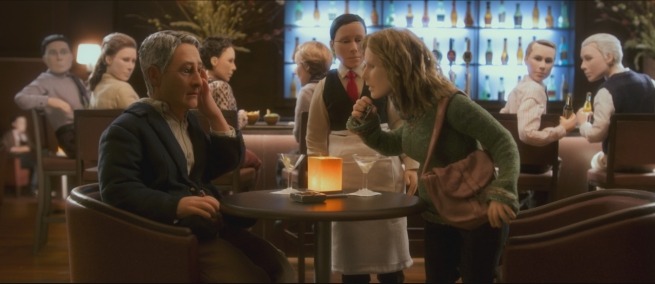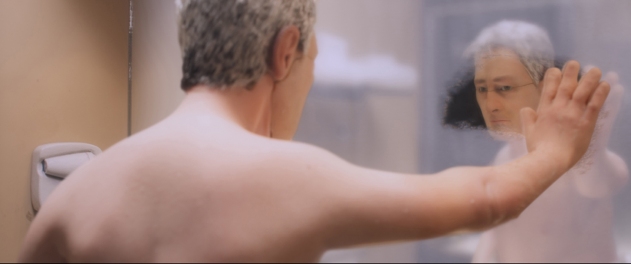
The rare neuropsychiatric condition known as the “Fregoli delusion/syndrome” runs as an invisible undercurrent in Charlie Kaufman’s brilliant new film ANOMALISA. In the film, middle-aged British author Michael Stone arrives at a corporate conference to deliver a keynote speech on customer service, advising his audience to “look for what is special about each individual, focus on that.” The irony of this statement is difficult to overstate – irony is to a Kaufman film what crime is to a Scorsese film – since Michael Stone is literally incapable of seeing what is special in individuals. With a single notable exception, every one of the dozens of other characters in the film share an identical face and an identical voice, an effect compounded by the film’s use of dolls and stop-motion photography to tell its story. The effect is overwhelmingly spooky, a nightmare world of perfect blandness and uniformity, where everyone has about as much individuality as a department store mannequin.
Fregoli syndrome is real: it occurs in the context of a mental or neurological illness and is classified as a “delusional misidentification syndrome,” which also includes Capgras syndrome in which patients believe that someone very close to them (e.g., a spouse, close family member, or friend) has been replaced by a persuasive replica. Patients with Fregoli delusion come to believe that different people (usually strangers) are all the same person (usually someone close to them) in disguise, either changing in appearance or changing superficial accessories, but unable to mask their true identity. The delusion is commonly associated with an excess in dopamine from long term use of the Parkinson’s Disorder treatment Levodopa (L-dopa), or brain damage to the right frontal and left temporo-parietal cortex, or right temporal lobe and fusiform gyrus (a.k.a. the fusiform face area), which includes the regions responsible for facial recognition. Except, instead of everyone appearing unfamiliar, which occurs in people with prosopagnosia (a case of which was made famous by Oliver Sacks in The Man Who Mistook His Wife for a Hat), or familiar people appearing to be replaced by imposters, which occurs in Capgras syndrome, in Fregoli delusion different people appear to be the same person, but in disguise.
Charlie Kaufman’s story was clearly inspired by his knowledge of Fregoli delusion. The story was originally a radio and stage play, which he wrote under the pseudonym Francis Fregoli, and the setting of most of the film is the Fregoli Hotel. But this is not a film about neuroscience; it’s a film about human experiences and relationships, and Kaufman takes several liberties with the disorder to explore his subject. For one, Fregoli sufferers are usually gripped by a paranoid delusion that one nefarious person is scheming to reappear in various roles in disguise, but Michael Stone isn’t so conspiracy minded. He is aware that he has a generic misidentification problem, and instead of paranoia this invokes a mixture of frustration and a sense of dullness and monotony. He has managed to adapt to and accept his situation, and has developed tricks to work around the problem. He searches for other cues when speaking with someone he is supposed to know but can’t identify, and in spite of his limitations he has a successful career as a writer.

Another departure in the film from the clinical presentation of Fregoli delusion is the fact that all the characters Michael meets look and sound the same. However, for Fregoli sufferers, unfamiliar people actually look and sound different, they just feel familiar, so the patient misidentifies strangers as being people they know in disguise. An additional deviation from the actual syndrome occurs when Michael meets someone (the title character) who inexplicably is not affected by his disorder. As far as I know, there hasn’t actually been a clinical case of a Fregoli sufferer who identifies everyone as the same person with a single glaring exception, and if someone’s fusiform gyrus is actually damaged there is no reason to think this would be possible. But as a scientist I can hardly fault Kaufman for his poetic license. In his hands, the effect of this one unexplained anomaly becomes an intoxicating metaphor for the experience of falling in (and out of) love. As a neuroscientist I’m often dubious of misrepresentations of my field in film, but in this case the effect is so potent that I entirely applaud the distortion.
From now through March, 2016 the Museum of the Moving Image hosts The World of Anomalisa in which visitors can see the foot-tall puppets on display in the set of the hotel room where the main action takes place.